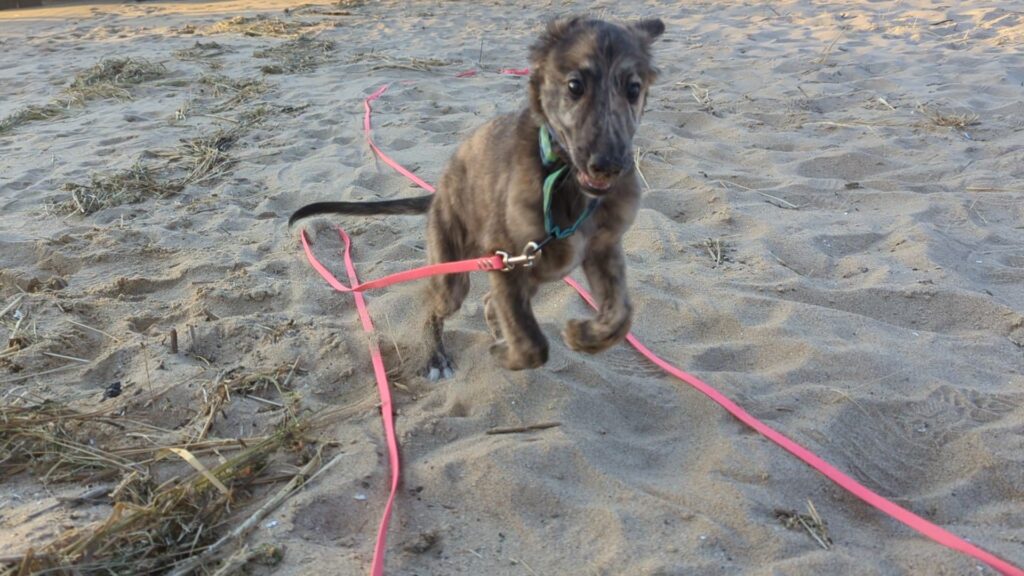There are many labels for dog trainers. There are balance trainers, there are “traditional”, there are hacks that use shock collars, there is the force-free crowd, and a million other labels I am sure I am missing. Today I want to talk about the label I most of the time find myself applying to myself and that is of the “Marker” trainer. A few short sentences in and this already feels like a BBC documentary on the different species of dog trainers. Labels are tricky and come with a lot of baggage. Just invoking traditional dog training can put a lot of different images into someone’s head. When I hear it, I picture someone using a shock/prong/choke chain and other aversive methods. This contrasts with one of the first times I realized how even in the R+ world, a certain label can shade how people see you.
I went to school at Bergin University of Canine Studies in Penngrove CA. Wonderful experience and I met some absolutely amazing people who I am fortunate to mostly stay in touch with (sorry I haven’t responded to your Snapchat yet). The program is a hybrid online and in-person program where every semester we go out to the campus and spend two weeks practicing many of the skills and theory we have learned about online. I was so excited to pack my clicker something up until that point I have used religiously. In our first session on campus, we talked about what we did and how we did it. I mentioned that I was a clicker trainer. You could feel the wind change. I was suddenly in the camp of “one of those people”. It took the first week but I felt like I finally shook off the baggage that one sentence gave me. This was shocking, I just assumed that’s what most people did. What I want to talk about today is clickers, and markers, why I like them, and some of the shortfalls around these tools. Don’t worry, we will also talk about the other side of the coin and why for the reasons a clicker might not work for you, and why a shock collar doubly won’t work for you.

R+ training is based on the principle called “Thorndyke’s Law of Effect” or as Bonnie Bergin puts it “Dog’s Law if it works I’ll do it again, it doesn’t I won’t”. We want to reward dogs when they get whatever our target behavior is. If a dog walks nicely in a heel, we want to reward them for making the right choice. Can you see the possible issue in this small scenario? How long is it going to take for the dog to notice that they did something right and get rewarded? A clicker, or a marker word, is a way to put pinpoint the moment the dog offers our targeted behavior. We can offer some kind of sound to bridge the gap. Your dog offers a sit, we click, then the dog is rewarded. The clicker first needs to be primed, helpful t-shirt. We want to pair the sound with the reward, so when the dog hears that sound they know that a treat is coming. Once the association is made we can then start to apply it to what we want to see. The click or marker acts like an auditory screenshot. The dog knows the sound means a reward, so we pair the behavior, sitting when cued, with the sound, and the sound is already paired with the reward. Sit->Click->Treat.

So what I love about clickers. Clickers (markers in general too) are really helpful at making specific things *click* (get it?). A lot of the stuff we look for in behavior work is small details that we can miss, a clicker can help illuminate those details. Rather than leaving it nebulous as you reward these markers can really help make it feel more real. That moment when you see your dog think about it *CLICK*. I have found the clients that have taken to clicker training really enjoy using them because it helps them look for and find the behaviors that they want from their dog. Also remember Palov is on your shoulder, while working with your dog, you are training yourself as well. Those little wins, that you capture with your clicker can also help build the association in our heads as well. You are classically conditioning yourself to notice those little moments, those victories in your head, and are rewarding yourself with attention from your dog. Just like those salivating dogs when hearing the bell, your brain will start to associate the clicker with your dog winning. For many people this helps shift their perspective from what their dogs are doing wrong to, where did my dog get it right. Clickers are also really great are shaping excellent behavior. If you want to take specific skills to the next level, clickers are amazing (assuming correct usage) at pinpointing accuracy. You cannot speak as fast as your thumb clicks down on that button, which gives you so much more time to really focus on the next level. I also love that clickers provide a very distinct sound that only has one context training. For many of the “Aggressive” dogs that I work with, I like to start with a clicker because of how distinct the sound is. That *CLICK can pull dogs out of reaction. Think for a moment about how dogs typically see the world, first and foremost their sense of smell guides them, followed by their sight, and a distant third is their ears. While reacting your dog probably won’t hear you call their name, but a sharp distinct noise, that has been only paired with rewards? That can give us the space we need to recover.
Wow, clickers and markers sound amazing they can do no wrong! Clickers do have their fair share of faults as well. First and foremost, clickers are not the most accessible tools. To use one to its potential you need to have great timing and full use of your body. This is something I didn’t even consider until working with the service dogs in training at Bergin. Many of these dogs would be placed with people who are missing arms or don’t have access to their fingers. This experience opened my eyes to a lot of the ways I was falling short in terms of how I approached a lot of my training methods. I typically saw clicker aversion as people not wanting to carry another thing, or people unconvinced by R+. I think this is an important flaw that we don’t often talk about in the clickerverse. This is almost definitionally an exclusive tool in that regard. I have seen a lot more discussion around how to make training more inclusive which is such an important discussion, and I am happy to see a lot of new events popping up focusing on pushing the boundaries on accessibility. As much as I do love them, I have shifted away from using a clicker in most cases to using just a marker word which functions the same. Another big flaw for clickers can be children. In one of my very first classes I taught I was so proud handing out clickers to the class, I did my demo with Trapper, and then just heard *CLICK CLICK CLICK CLICK CLICK CLICK CLICK CLICK CLICK* It is a super satisfying sound and when you have one that feels just good to press down, my current favorite is the Petsmart “Top Paw”. This can be a challenge if the sound is being misapplied, it loses that connection we are working towards. Lastly, the other common challenge is some dogs are just afraid of the sound. Clickers make a sudden loud sound, and for many dogs, this can be aversive which defeats the purpose of using a clicker in the first place.
I have the good fortune of having access to a great deal of networking via some Facebook groups. I reached out to the hivemind to get the opinions of some of the dog trainers in Massachusetts. I received a handful of responses, and unsurprisingly it was a mostly positive but mixed bag of responses. One trainer replied, “I like it for instructing. I can be listening/talking to a pet owner, and the clicker is second nature”. Which for me is so true. If you ever watch me working with a dog you can see my thumb pressing down even when I am not even holding a clicker. I do think it does a really great job of explaining what we are looking for when working with a dog and can make some small things really pop to clients. There were a few responses that mentioned that they have been using a clicker for decades and they couldn’t see themselves training another way. Especially considering how new R+ emphasized training is, it is amazing when there are people who have been using these methods for so long. It highlights the dedication to the craft and to pushing new boundaries, even against the inertia of the industry. The majority of the responses that I received fall into the “I used to, but have moved away for XYZ reason” camp. These reasons were as broad as many dogs seemed to not like it unless it was super soft, to using a verbal marker seems to be just as effective. One commenter even provided a journal article linked here. The article seems to support many of the responses that have moved away from them. The article didn’t find clickers/markers/other reinforcement methods to be better or worse than any other.
Looking at the sum of the parts I think we get the best answer possible. Should you use a clicker, or a marker, or some other way to reinforce your dog? Sure. Whatever works for you, and your dog do it. Reward them for making those right calls whether you use some kind of marker or not. Reward them for being the amazing dogs they are. You have carte blanche to find the right way to communicate and reward your dog in the way that works for both you and them. I think this is one of the most fun aspects of working with dogs. Discovering the dog in front of me and finding out how I can best communicate with them. Learning how to high-five them for making those right calls, and how to jazz them up is one of the most rewarding experiences of my life. Learning to really meet and know the dog in front of you is the cardinal rule of dog training. You need to understand them for who they are, not who you think they are, not for what you want them to be, but for the dog sitting there in front of you. Now that you know that the only thing to do is try, get out there, grab a clicker (or not) pick a marker word (or not) and get training!

